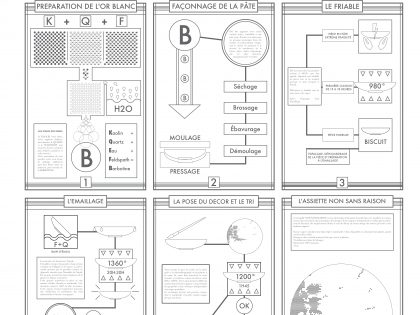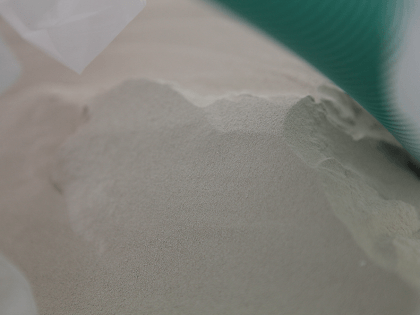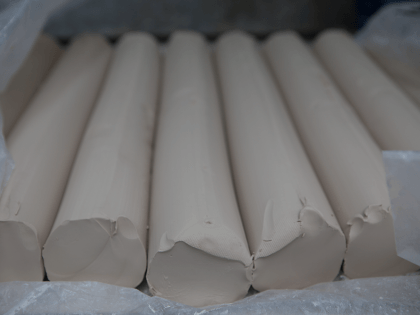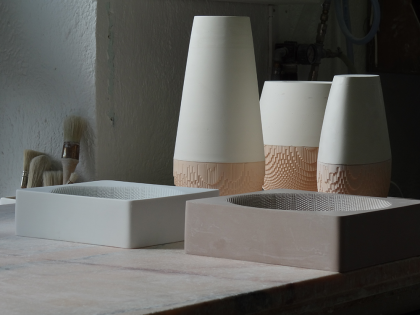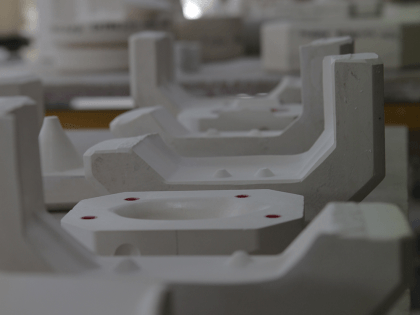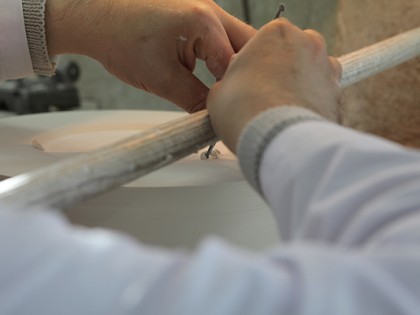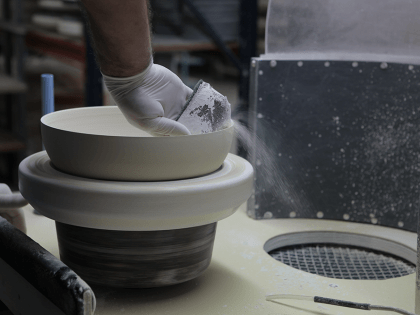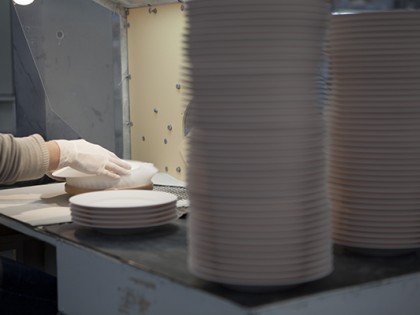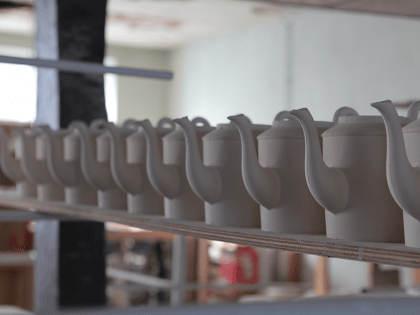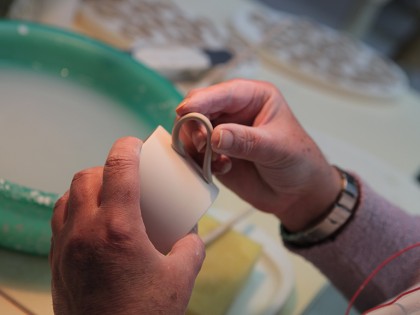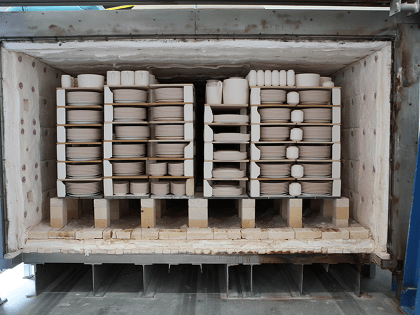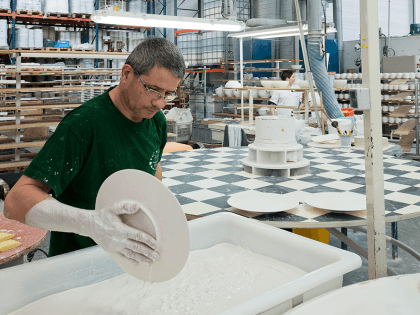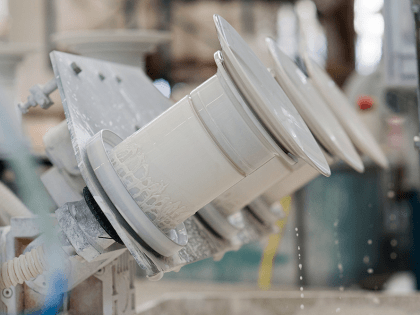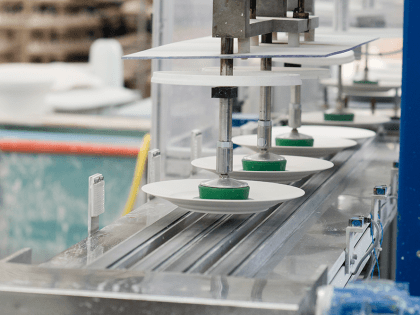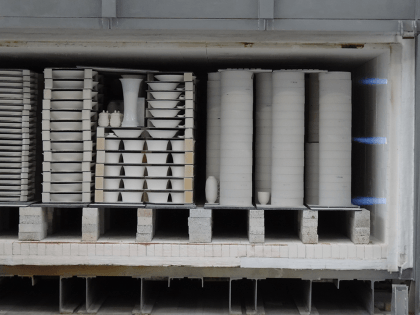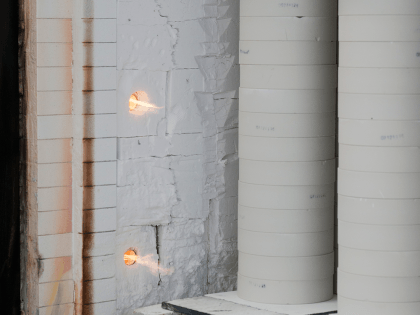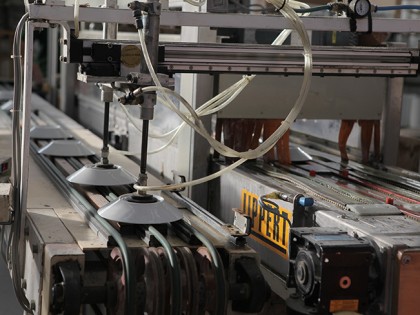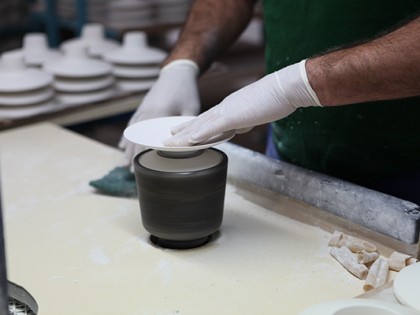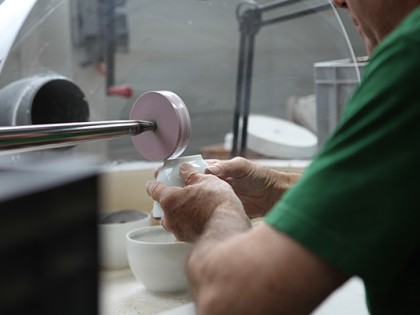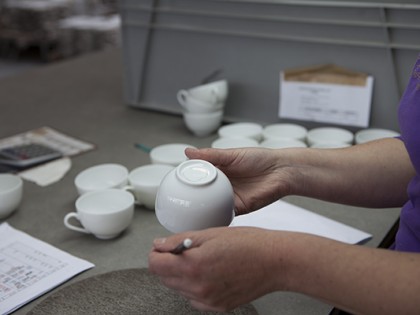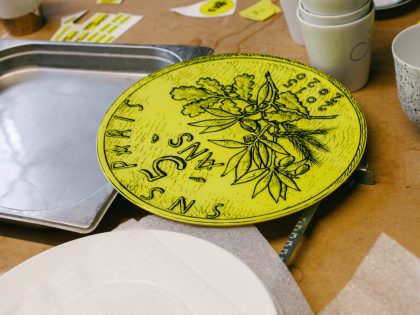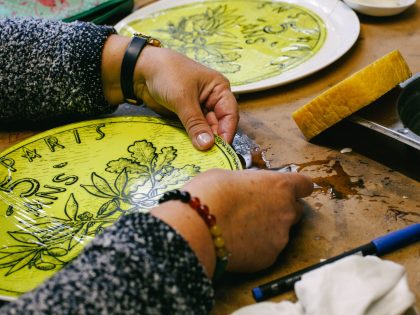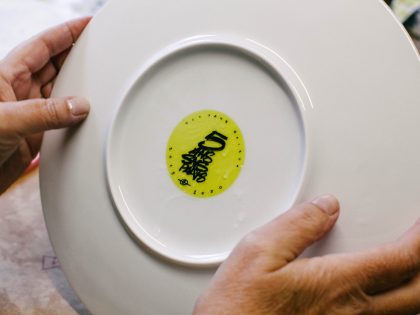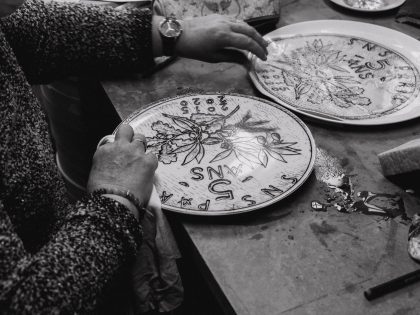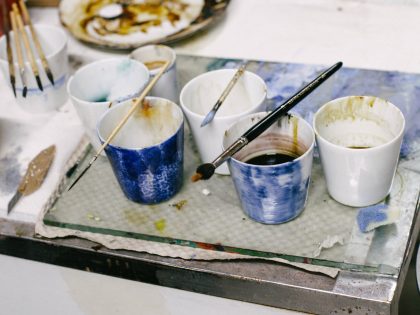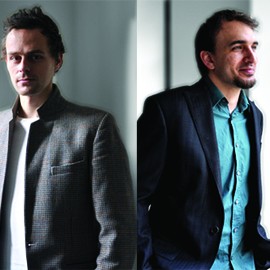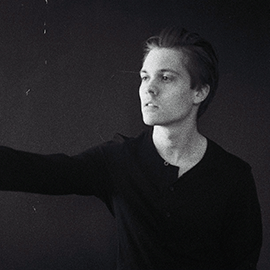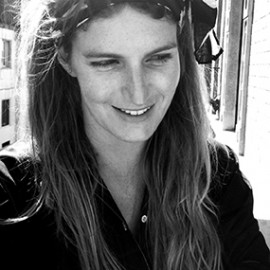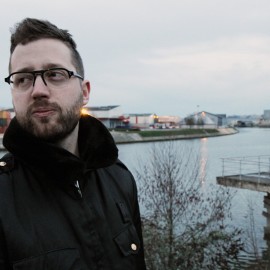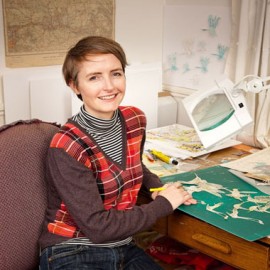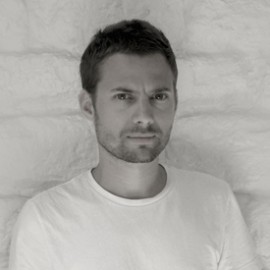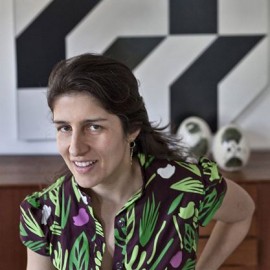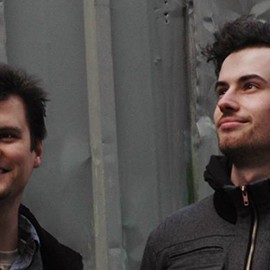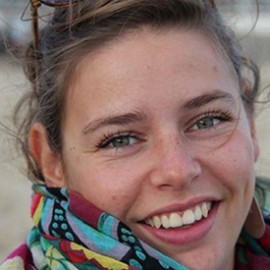Non Sans Raison
Our Philosophy
As a showcase of our unique heritage in the world, Non Sans Raison vouches for the savoir-faire of Limoges porcelain. We innovate on all the uses of porcelain to perpetuate the spirit of this millennium material. Everyday we bring new life and new vitality to this material with exceptional qualities and a prestigious history, a history intricately woven with the roots of men.
Our Material
Many centuries ago, our people discovered on earth, a clay called extra white kaolin. After much handling, this kaolin is transformed into the most dazzling and delicate of porcelains, which is sublimated by our decorations, giving to our products all their peculiarity. In complicity with our porcelain craftsmen, we bring out the full potential of this white gold from Limoges. By their careful care and technique, we exalt its natural qualities in every product.
The Guarantee of a High Quality Porcelain
We remain faithful to our ethics and convictions and are committed to create the highest quality products. From choosing the best materials to maintaining a close surveillance at each step of the fabrication we are fully engaged in a high quality process. This is why all of our products are handcrafted in Limoges, France, and perfected with a clever dosage of precious metals, ideal temperatures, meticulous finishes and a sense of detail.
.
For further details about Non Sans Raison
Who we are?
As a french luxury porcelain maker Non Sans Raison showcases Limoges’ unique heritage int the world and boldly renews Limoges porcelain and tableware while preserving the ancestral savoir faire of Limoges porcelain. It is through innovation that Non Sans Raison, founded in 2008, highlights the ancestral savoir faire of Limoges porcelain by creating in accordance with the ancient traditions of contemporary products commercialized worldwide and adapted to new uses.
What we do?
Non Sans Raison is also known for the diversity and the cross collaborations with artists and visuals designers and the relevance of participative events about the porcelain. Attached to the idea that creation has meaning only in regard of a thought and reasoned approach, Non Sans Raison sees the porcelain as a starting point towards a multi-sensory experience that sometimes escapes from the table. Confronting the tradition of social and culinary uses of today, their objects echo of a lifestyle transformation.
Our professional service can help you to manage your tableware projects and many others porcelain projects by providing a quality porcelain product, made in Limoges. Our services and offers are numerous : we are able to produce your own shapes and all kind of porcelain products or to personalize our white shapes, from a single item to series. Non Sans Raison meets your needs and gathers together a production, creative and consulting team and a varied and well qualified network of trustworthy partners and suppliers to study your concept, your budget, your needs and your constraints.
Why we do it?
We innovate on all the uses of porcelain to perpetuate the spirit of this millennium material. Everyday we bring new life and new vitality to this material with a very long history, a history intricately woven with the roots of men. We do more than wake a sleeping beauty, standing on the traditions of our ancestors; we arise to the constant challenge of making porcelain reflect our time. And we achieve this working in a balanced and ethical way.
Where we do it?
Non Sans Raison remains faithful to its ethics and convictions and is committed to create the highest quality products. This is why all of our products are handcrafted in Limoges, France. From choosing the best materials to maintaining a close surveillance at each step of the fabrication we are fully engaged in a high quality process.
.
The Handcrafted & Industrial Production Process
Preparation of the white gold
Extra white KAOLIN, white sedimentary clay rock, QUARTZ and FELDSPAR are combined, crushed, sieved, diluted and then kneaded, and finally wrung out. This combination of three powders arrives as a stony mixture that must be diluted in a kneading machine to become ceramic slip. Since then, this ivory cream appears, like bread dough. It is then filtered to remove all the water it contains and wrings out.
Modeling and shaping
Depending on the quantities and the difficulty of the pieces to be produced, there are three different shaping techniques which are manual casting, pressure casting and manual calibration.
For small series and the creation of original and complex shapes, the modeler creates his matrix which is also called “mother” or “core” that he shapes in porous resin. This matrix makes it possible to produce as many plaster molds as the production requires. For reasons of quality, these molds are replaced regularly because they can realize a number less than 100 pieces. The paste, remained in a slip state, is then poured manually into the mold. Once the excess of slip is removed, the mold dries about half an hour before the piece is removed from the mold.
Contrary to the casting technique that uses a liquid paste, the paste required for pressure casting is reduced to powder by the action of high temperature pulsed air. This powder goes then to isostatic pressing between two polyurethane molds, constituting the upside and the underside of the future piece. In this way, the powder aggregates and solidifies. This technique is used especially for mass production.
The technique of manual calibration is used for small series and circular and complex pieces. To do this, the paste is first introduced into an extruder from where it comes out in the shape of rolls of paste. These rolls are then pressed on a mold in rotation by action of a calibre.
The piece shaped according to these different techniques is then trimmed, mopped up, brushed and dried. At this stage, the particularly friable piece is worked with the greatest delicacy. During the trim phase, different parts such as handles or pouring spouts can be added thanks to the slip and the glue.
First biscuit firing
From that time comes the first firing at 980 °C, called biscuit firing which solidifies the object and makes it porous and thus receptive to enamel. Delicacy and competence are required in this step to leave no trace of manipulation after this first firing. After the biscuits are removed from the oven, they are reduced by 15% in a homogeneous way in all their proportions. They are then dusted by brushing with compressed air.
At this stage, another cooking is possible in order to obtain a porcelain biscuit. The object is then fired at high temperature (1. 400 °C) without enamel and without decoration.
Enameling and second firing
The encounter of the biscuit with enamel…
The manual or automatic enameling comes after the first biscuit firing. The enameller soaks every biscuit in a bath made of feldspar and quartz. The object, become porous by the first biscuit firing, absorbs all the moisture of the enamel. By a precise gesture of the hand, the thickness of the glaze is deposited on the piece. Manual spraying is also used for some parts of the object. This glaze transforms the object into a vitrified, white and translucent material. Each piece, dried for a long time in the air, is then checked with a brush before firing.
A second firing at 1380°C takes place with enameled objects. The objects are stacked inside the oven, protected by the refractory cases called gazettes. This high-temperature firing in a reducing atmosphere causes a deep vitrification that makes the biscuit and its glaze inseparable. After the objects are removed from the oven, a manual or automatic polishing is carried out on each piece. A sorting of objects is also carried out, in order to keep only the first choice.
Creation, decoration and firing
After the second firing comes the creation of the pattern on the piece thanks to the chromolithography or the hand painting or even to the pistol spraying. Another technique is applied by the band gilder to paint bands on plate rims. The piece is centered on a rotating wheel in order to produce a line of constant thickness on its rims.
Finally, the last and third cooking of the decorated object takes place between 800 and 1200 °C. This firing fuses the various oxides in the enamel and gives to the porcelain the essential resistance for everyday use. The ceramic becomes non-porous, sonorous, hard, translucent and unique by its decor.
The final piece
The stamp Non Sans Raison is a declaration of a quest for perfection and a manifest to the fame of the porcelain know-how of Limoges. Our insistence on authenticity is reflected in the perfection of the handmade objects, ideal temperatures, attention to details, a meticulous mix of precious metals and well-designed finish. Lightweight, translucent and fine extra light kaolin. Dishwasher safe as many times as you want. Authentic Limoges porcelain. 100% French manufacturing.
.
The Founders
BERTILLE CARPENTIER
Born in 1985, graduated of ISEM-ESMOD Paris and earned a Master’s degree in fashion research, Bertille Carpentier began her career as a writer for magazines specializing in graphic design, design and fashion.
She then joined a consulting and trend forecasting agencies as a research manager in marketing and creation strategy before co-founding Non Sans Raison in 2008 with the desire to breathe new life into Limoges porcelain by bridging heritage and modernity while anchoring the brand deeply in its territory.
Since 2022, she has also served as President of the National school of Art and Design of Limoges (ENSAD Limoges).
MARTIAL DUMAS
Born in 1983 and graduated in graphic arts, Martial Dumas started his carrer as a graphic designer in the fashion and spirits industries before joining the ISEM-ESMOD school, where he met Bertille.
After gaining experiences in marketing management and design coordination in Haute-Couture, he co-founded Non Sans Raison in 2008. At the same time, he established Deuxième Chambre, a high-end artisanal screen-printing workshop.
Together, they also launched Coalition, a consultancy dedicated to product enhancement. This agency deals in perpetuating and bringing products made with ancestral craftsmanship up to today’s.
NON SANS RAISON, KEY MILESTONES


The Non Sans Raison adventure began on June 18, 2008, at the Joyce Gallery in Paris, with the exhibition of our first three emblematic collections: Avant, Ici, Maintenant, Chronos, and Square—all in platinum and specially formulated to be dishwasher-safe.This first exhibition, conceived as a scenography inside dishwashers combining our plates with iconic objects, already laid the foundation of our creative approach. Revisited several times since, this founding display remains a strong signature of the brand.
From the very beginning, our unique vision was shaped around three major convictions: ethics, innovation, and modernity.
We wanted to bring Limoges porcelain into spaces where it had yet to fully belong, by making it boldly contemporary, committed, and daring. Just a month later, our momentum was confirmed with our first prestigious collaborations—with Alife, Clark Magazine, the concept store Colette, and Le Bon Marché. This dynamic marked the true launch of the brand, with pieces showcased around the world as genuine works of art.
Since then, Non Sans Raison has established itself in the world of high-end hospitality and gastronomy, while also developing a strong presence in concept stores, independent boutiques, and art galleries in France and abroad.
Driven by a constant desire to innovate, the founders have, from the beginning, pushed the limits of Limoges porcelain by exploring printing and digital design techniques, developing underglaze collections fired at 1450°C, and imagining unprecedented and disruptive decoration processes at the crossroads of art, design, and exceptional craftsmanship.
Since 2009, the brand has expanded internationally with Maison & Objet and an exhibition at Rossana Orlandi, an iconic figure in design, during the Milan Design Week, while multiplying its participation in events dedicated to contemporary design. In 2010, it created the scenography for Lyon’s City Hall as part of the Lyon Design en Ville route and launched the Cooklette workshops with Colette, a three-year collaboration based on participatory events such as culinary and artistic workshops centered around porcelain. It also designed a collection in solid silver with the prestigious Richard Orfèvre workshop, collaborated with Cristal de Sèvres, and took part in the Dutch Design Week.
In 2012, it unveiled the Evolution catchall tray designed with Simon Naouri, the first piece to integrate 3D in its creation process, thus asserting its pioneering role in this approach.
Between 2012 and 2014, Non Sans Raison continued its expansion in New York, London, Beirut, Miami, and Bordeaux… It was praised by the Financial Times for its magnetic dresser The Coco Wall Plates, and launched the concept Non Sans Raison Tasting Room, dedicated to unique culinary experiences, notably presented at the Who’s Nextand Première Classe trade shows.
Present at major design events such as Maison & Objet, Designer’s Days, the Agora Biennale in Bordeaux, Paris Design Week, Meet My Project, Art Basel Miami, and Design Miami, the brand has also exhibited in prestigious venues such as the Joyce Gallery in 2008, at the Colette Carnaval, the FIAF in New York and the Flow Gallery in London in 2012, at the Lieu du Design in 2013 as part of the 20th anniversary of CRAFT, and at the Miami Design Bridge in 2014. It also organized a large porcelain decorating workshop with the Posca brand at the Adrien Dubouché Museum for the European Night of Museums—a success that led to it being repeated in 2014.
In 2014, several emblematic pieces (Avant, Ici, Maintenant, Axo, Facette, Utopia) were added to the national collections and are now housed in the Adrien Dubouché National Museum in Limoges. The brand was featured in a report on the Des Racines et des Ailes TV program on France 3, and was the subject of a dedicated exhibition at the Agora Biennale in Bordeaux.





In 2015, the brand strengthened its international presence: Maison & Objet Miami, French Design Connection in New York, and within its own country through Creative France at Le Bourget and Design Power at the Lieu du Design in Paris. It also became a partner of Studio Cook + Design, a new culinary event hosted by Maison & Objet. That same year, the Adrien Dubouché Museum dedicated a major retrospective to the brand titled Avant, Ici, Maintenant – The Non Sans Raison Experience, accompanied by a book published by Les Ardents Éditeurs.
In 2016, Non Sans Raison launched its Kids line and created a pop-up restaurant with three renowned chefs. In 2017, the brand collaborated with the Bordeaux Food Club, took part in the exhibition Constellations Porcelaines en Limousin, and was the subject of a retrospective at the Maison de la Céramique du Tursan.
In 2018, Non Sans Raison celebrated its 10th anniversary at the Joyce Gallery (Palais Royal), the iconic venue of its early days, and launched the Mix & Match digital app, allowing users to freely combine pieces from its collections. In 2019, the AXO collection was exhibited at the Grand Palais, while in December 2020, the first Non Sans Raison boutique opened its doors in Limoges.


In 2022, the Magma collection was exhibited in Japan, The Barillet Wall Plates were showcased at the Adrien Dubouché Museum, and a wall installation was presented in Bordeaux. In 2023, two major pieces came to life: a collaboration with TOT, the living totem, and Smaller Fountain with Rabs Arts, a tribute to Duchamp. The year concluded with an exclusive collaboration with The Arsenale, a leading name in the mobility of the future.
The year 2024 marked a strong wave of development across Asia and the United States. Non Sans Raison took part in the Art de Vivre à la Française exhibitions in Hangzhou, New Delhi, Seoul, and New York—key milestones that reflect the growing global interest in contemporary Limoges porcelain. This international reach gave rise to unique creative collaborations: with Ephemera Precious Documents, around rare fashion-related archives; with the Korean brand Nounou X Phamily First at Le Bon Marché; and with artist Christine Sun Kim for an exclusive capsule collection during Art Basel.
These projects reflect our ongoing commitment to fostering dialogue between heritage and contemporary creation, between traditional craftsmanship and today’s artistic language—serving objects rich in meaning, culture, and emotion.
Today, the brand continues to reinvent itself through new projects, collaborations, and international expansion. Rooted in excellence and renewal, Non Sans Raison boldly and passionately shapes the future of porcelain.

